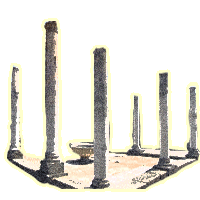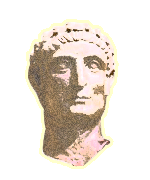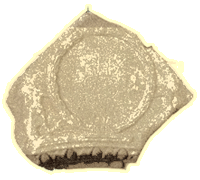Being on the territory embraced with constant wars, destruction, fires and migrations; but also on major roads connecting Europe and East; Serbia have reach cultural - historical heritage. Difference and wealth of the monuments built in the past and her natural beauty, make Serbia very attractive country and are very important part of her tourist attraction.
Serbia, the land where 17 Roman Emperors were born, presents the region of impressive tracks of glorious Roman Empire (27 B.C. - 476 year), whose rulers, according to historical sources and archaeological examinations, raised their native land till highest point.
The big role in development and extension of the great Roman Empire had the Danube River, which also presented the border of the Empire.
According to notification of Ministry of Economy, The Government of Serbia will soon accept the master plan "Route of Roman Emperors". This is a unique educational tour, which will introduce domestic and foreign tourist with the significant of Roman Emperors that left indelible tracks of material culture in Serbia. The total amount intend to this project is 25 million euro. The plan considers construction of parking and accesses near the remains of Roman towns and fortresses, setting up pointers, carving busts of 17 emperors, installing the lift till Trajan table, building the laser Trajan Bridge, preparing the special roman menu, making souvenirs, construction of roman boarding houses...Tourists will have unique opportunity to ride by roman rickshaws, drink roman wine, and wear roman togs and to return to a history of Roman Empire - and all that in Serbia!
Continue
|
Sites which can be seen in this route are: (from North)
- Sirmium(Sremska Mitrovica)(I - IV century), also known as "the City of Caesars and martyrs" presents one of the four ancient roman metropolis in region of Serbia. When the Roman Empire was divided on east and west part, Sirmium became the metropolis of the east part.
- Singidunum(Belgrade) (II century), mostly is covered with fortress built by Tuks in 15th sentury.
- Viminacium(near Smedervo) (I till XIX century), former Roman town and military camp, presents the worlds jewel and one of the most significant archaeological sites in Southeast Europe.
- Trajan Table (near Kladovo)(around 100 year), is located on natural, almost vertical rock, high above the level of Danube river.
- Trajan Bridge (near Kladovo) (104 - 105 year) was raised over Danube, by Emperor Trajan, for the purpose of conquering of Dakija, nowadays Romania.
- Diana (near Kladovo) (the end of I century), fortress raised on the rocky cliff of Danube river, during the Emperor Trajan, presents one of the biggest and most preserved roman fortresses (castrums) on Danube.
- Felix Romuliana (near Zajecar) (III and IV century), the residence of Roman Emperor Gaj Valerie Maximianus Galerius. It presents the superior achievement of late ancient times, due to art rang of mosaics and whole architecture.
- Mediana (Nis, Naisus) birth place of the great Roman Emperor Constantine the Great (280-337 year), the first emperor that afforded the freedom of religion, to all Christians, presents the basis of Naissus, ancient Roman Empire. Mediana was built in IV century
- Justiniana Prima (Emperors town, Caricin grad, near Leskovac), was built by emperor Justinian in year 530 and raised in byzantine province Ilirik, where emperor Justinian was born. Life in this town lasted from VI to VII century, when it was abandoned at the time of Avro-Slavic destroying.
TOP
|
















